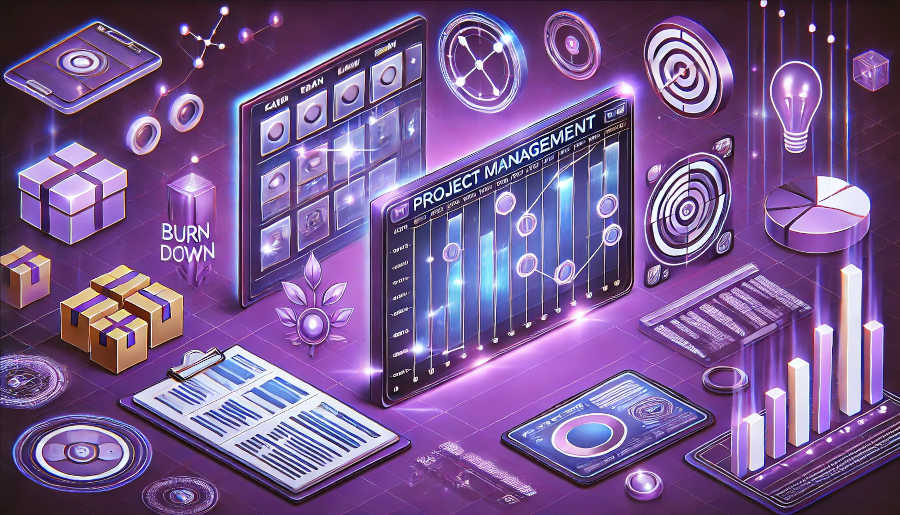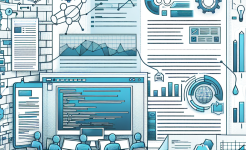Understanding the Purpose of Retrospective Meetings
Retrospective meetings serve as a platform for teams to take a step back from the day-to-day hustle of sprint work and engage in a deep analysis of their processes, interactions, and outcomes. At their core, these meetings are about learning and growth. By examining what went well during a sprint, teams can reinforce positive behaviors and practices. For example, if a particular communication channel was highly effective in sharing information quickly, highlighting this success can encourage its continued use.
On the other hand, identifying what didn't go well is equally important. This could range from issues in task allocation that led to some team members being overloaded while others had little to do, to technical glitches that disrupted the workflow. Understanding these pain points allows the team to address them head-on, preventing them from recurring in future sprints. Moreover, the collaborative nature of retrospective meetings fosters a sense of ownership among team members. When everyone has a say in analyzing the sprint and suggesting improvements, they feel more invested in the team's success.
The ultimate goal of a retrospective meeting is to create an actionable plan for the next sprint. This plan should be based on the insights gained from the analysis, focusing on specific changes that can be implemented to enhance performance. Whether it's adjusting the team's communication strategy, reallocating resources, or adopting a new tool, the plan should be clear, measurable, and achievable.
Creating a Safe and Open Environment
One of the key factors in conducting an effective retrospective meeting is creating a safe and open environment where team members feel comfortable sharing their thoughts and feelings. In an agile setting, where transparency is highly valued, it's essential that everyone feels they can speak up without fear of criticism or retribution. To achieve this, the meeting facilitator should set the tone right from the start.
The facilitator can begin by emphasizing the purpose of the meeting as a learning opportunity rather than a blame game. Encouraging positive language and focusing on behaviors rather than individuals can help create a more constructive atmosphere. For instance, instead of saying "John made a mistake," it's better to say "We encountered an issue where the data was not updated in a timely manner." This approach helps to depersonalize the problem and makes it easier for the team to focus on finding solutions.
Another important aspect is to ensure that all voices are heard. In a team, there may be introverted members who are less likely to speak up spontaneously. The facilitator can use techniques such as round-robin discussions, where each team member gets a turn to share their thoughts, or anonymous feedback tools. These methods can give everyone an equal opportunity to contribute, regardless of their personality or position within the team. Additionally, active listening is crucial. When a team member shares their perspective, the rest of the team should listen attentively, ask clarifying questions, and show empathy. This not only makes the speaker feel valued but also helps in fully understanding the issues at hand.
Structuring the Retrospective Meeting
A well-structured retrospective meeting is more likely to be productive and achieve its objectives. There are several proven frameworks that can be used to structure these meetings, such as the "Start, Stop, Continue" framework or the "Mad, Sad, Glad" framework. The "Start, Stop, Continue" framework is straightforward. Team members are asked to identify things they should start doing, stop doing, and continue doing in the next sprint based on their experiences in the current one.
The meeting can start with a brief review of the sprint goals and what was actually accomplished. This provides a context for the discussion that follows. After that, the facilitator can introduce the chosen framework and give the team some time to reflect individually. This could be done through a silent brainstorming session where team members write down their ideas on sticky notes.

Once the individual reflection is complete, the team can move on to a group discussion. Team members can share their ideas, and the facilitator can group similar ideas together. For example, if multiple team members suggest starting to use a new project management tool, this can be grouped as a single item for further discussion. During the discussion, the team should explore the reasons behind each idea, evaluate the potential impact, and come up with an action plan. The action plan should include who will be responsible for implementing the change, by when it will be completed, and how the team will measure its success.
Using Visual Aids and Tools
Visual aids and tools can greatly enhance the effectiveness of retrospective meetings. They can help in organizing thoughts, making the discussion more engaging, and facilitating better understanding among team members. One of the most commonly used visual aids is the use of sticky notes. Sticky notes allow team members to write down their ideas independently and then easily group and rearrange them during the discussion.
For example, in a "Mad, Sad, Glad" retrospective, team members can write their "mad" thoughts (things that made them frustrated during the sprint) on red sticky notes, "sad" thoughts (things that disappointed them) on blue sticky notes, and "glad" thoughts (things they were happy about) on green sticky notes. Once all the notes are collected, they can be posted on a wall or a whiteboard, creating a visual representation of the team's experiences.
Another useful tool is a timeline. A timeline can be used to map out the events that occurred during the sprint, highlighting key milestones, challenges, and successes. This can help the team to identify patterns and trends over time. For instance, if there were repeated communication issues at a particular stage of the sprint, the timeline can make this more apparent.
Online tools can also be beneficial, especially for remote teams. Tools like Miro or Google Jamboard provide virtual whiteboards where team members can collaborate in real-time, adding sticky notes, drawing diagrams, and sharing files. These tools can replicate the in-person experience of a retrospective meeting, allowing for seamless communication and interaction even when team members are geographically dispersed.
Following Up and Measuring Progress
The work doesn't end with the conclusion of a retrospective meeting. Following up on the action plan and measuring progress is essential to ensure that the improvements identified during the meeting are actually implemented and have a positive impact on the team's performance. The first step in the follow-up process is to assign clear responsibilities for each action item. Each team member should know exactly what they are supposed to do and by when.
Regular check-ins should be scheduled to review the progress of the action plan. This could be during the daily stand-up meetings or in a separate, shorter meeting dedicated to the retrospective follow-up. During these check-ins, team members can report on their progress, share any challenges they have faced, and discuss any necessary adjustments to the plan.
Measuring the impact of the changes is also crucial. This can be done through various metrics, depending on the nature of the action items. For example, if the action plan was to improve the team's communication, metrics such as the number of misunderstandings, response times to messages, or the level of team engagement in discussions can be used to measure progress. If the goal was to increase productivity, metrics like the number of user stories completed per sprint or the reduction in the number of bugs can be tracked.
By following up and measuring progress, the team can ensure that the efforts put into the retrospective meeting are not in vain. It also provides an opportunity for continuous learning and improvement, as the team can analyze the results and make further adjustments as needed.
In conclusion, conducting effective retrospective meetings in agile sprints is a multi-faceted process that requires careful planning, a safe and open environment, proper structuring, the use of visual aids and tools, and a commitment to follow-up and measurement. When done right, these meetings can transform a team, improving collaboration, productivity, and the quality of the work being delivered. Teams that invest time and effort in mastering the art of retrospective meetings are better positioned to adapt to changing circumstances, overcome challenges, and achieve their goals in the dynamic world of agile project management. By continuously reflecting on their performance and making incremental improvements, teams can stay ahead of the curve and deliver value to their customers in an efficient and effective manner.
ARTICLE TITLE :How to conduct retrospective meetings effectively in agile sprints ,AUTHOR :ITpmlib

















